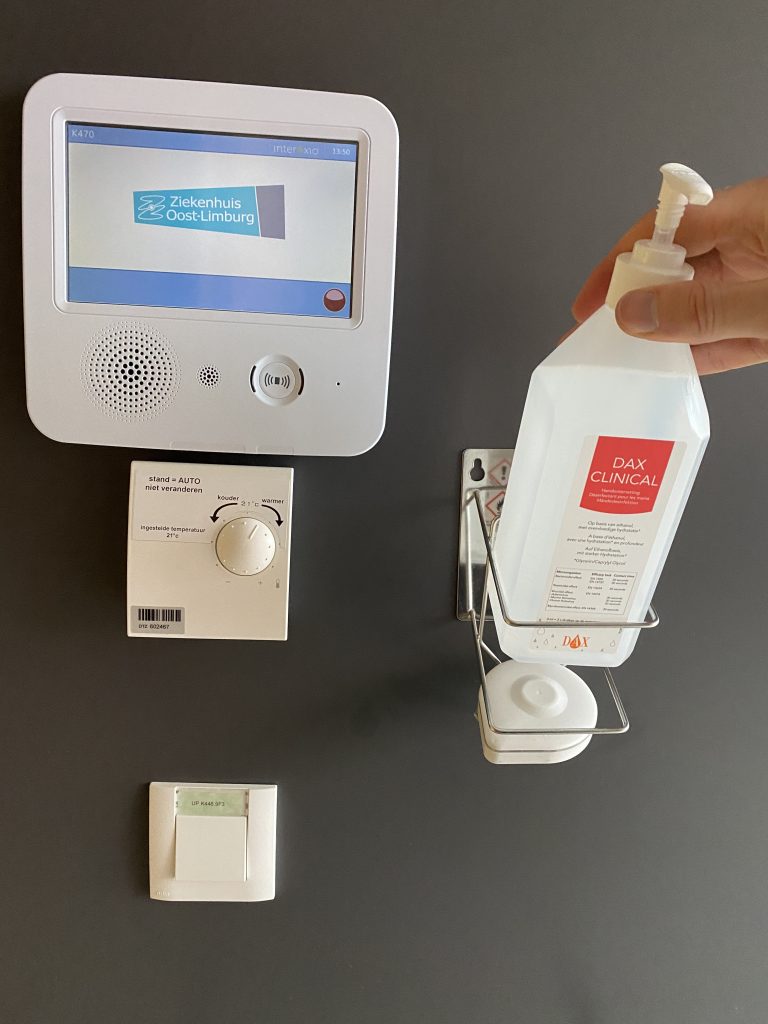Hospital studies show that 1 of 20 patients acquire an infection during their hospital stay. Up to 40% of these infections can be avoided with better hand hygiene. The hospital Oost-Limburg (ZOL), Belgium does not want to miss any opportunity to monitor the hand hygiene behavior. An ingenious system of sensors, called “NosoEx”, will check for each professional group how well hand hygiene is applied so that adjustments can be made where necessary. In this way, ZOL wants to take its patient safety to an even higher level.
Our hands are the weak link in the infection chain, so proper hand hygiene is crucial to avoid infections. Unfortunately, the disinfection of hands is often not practiced as expected. International statistics show that the average percentage of correct compliance is barely 50%. Fortunately, ZOL has a better score already: Internal audits show that compliance with the hand hygiene rules is between 70 to 80%.

To increase this percentage even further, ZOL was the first in the BeNeLux this week to install the automated system “NosoEx” to check how well the hands are disinfected. “In two of our nursing wards, our employees and doctors will receive a transponder (sort of badge),” explains Dr. Apr. Deborah Steensels of the Infection Prevention team. “Each disinfectant alcohol dispenser is equipped with a sensor and will register by which professional group, how often, how well, when, and at what location the hands are disinfected. Hand disinfections done by visitors will also be registered.”
For the installation, ZOL teamed up with GWA Hygiene (company that offers NosoEx product), Dialex Biomedica (supplier of DAX disinfectant) and Psimco (technical specialist). “The transponders have different colors” continues Dr. Apr. Steensels.

“A color is assigned to each professional group (e.g. doctors, nurses, therapists) active in the department. The advantage of this is that we not only get a global picture of how well hand hygiene is applied, but that we will also be able to map the results per professional group. Consequently, we can raise awareness and train in a targeted manner if necessary. However, the data collection is always per professional group because the registration is not linked to the employee name and is therefore anonymous. In addition, the system provides us feedback on the amount of disinfectant used (2x dispenser pumps for proper hand disinfection necessary) and which dispensers are often used and which are not. It’s also interesting to compare the data from the departments to create some kind of healthy competition.”
Dr. Apr. Deborah Steensels (Klinische Biologie)
For the beginning, the NosoEx pilot project starts with two nursing wards and later it might be expanded to the intensive care wards for two years. In the case of a positive evaluation, ZOL hopes to further expand the system to more departments.
